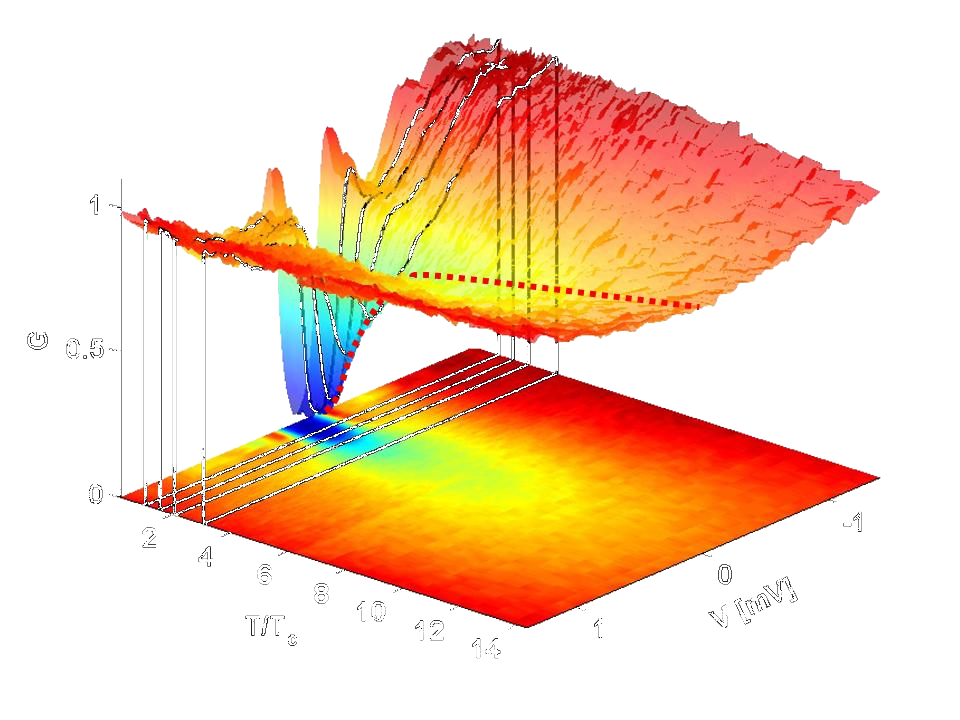A collaboration with Institute of semiconductor Physics (Russia), Argonne National Laboratory (USA) and IMEC (Belgium)
The existence of a gap in the density of states of superconductors has been very well verified in numerous superconductors untill the discovery of
high temperature superconductors (HTS). In those materials, a strong dip in the density of states exists up to a temperature T* much higher than the critical
temperature Tc. This anomaly is called a pseudogap and has been long thought to be the key to understanding High Temperature Superconductivity. There are
two competing explanations for this feature. In the first scenario, electrons start pairing above Tc in a state precursor of superconductivity as
suggested by the fact that the transition from pseudo to real gap is continuous. In the second scenario, the pseudogap reflects a state competing with
supercondctivity. This is suggested by the observation that the more resistive the sample is in the normal state, the lower Tc and the higher T*.
This suggests to investigate conventionnal superconductors which normal state is highly resistive as we have done.

We have measured TiN thin films which can show a pseudo gap up to 14×Tc. These are the first conventional superconductors with a pseudogap!
In our samples, the pseudogap originates from the formation of Cooper pairs above Tc. This is evidenced by the linear in ln(T/Tc) temperature dependence
of the conductance at zero bias. However, unfortunatelly, this does not mean that the 20 years long mistery of HTS is resolved. Indeed in HTSs the
order parameter has a different symetry leading to a much more complex behaviour.
Read more in
B. Sacépé et al. Nature communications 1, 140 (2010)